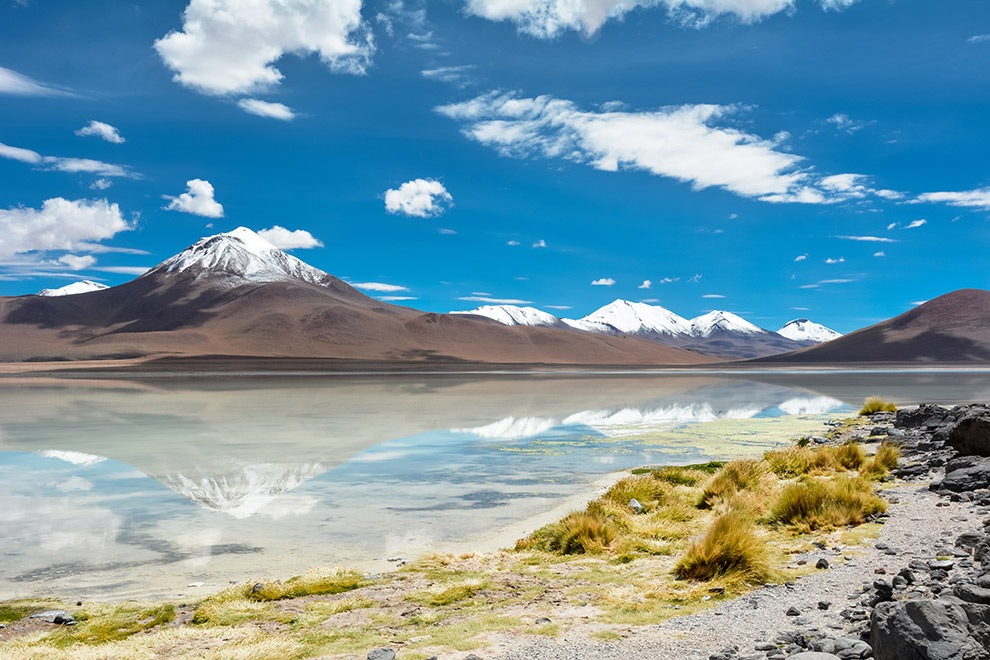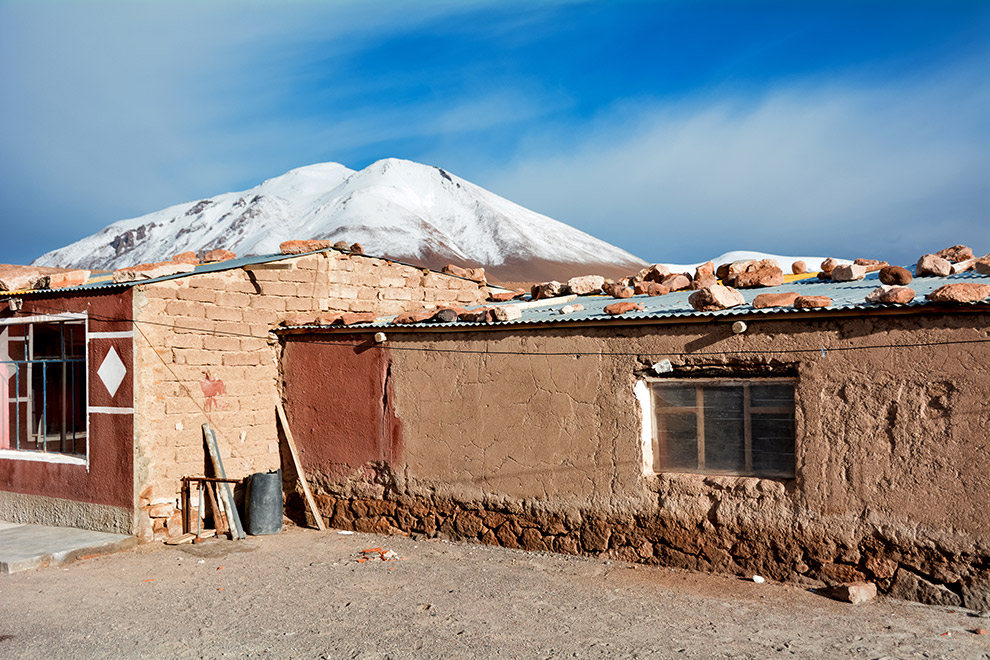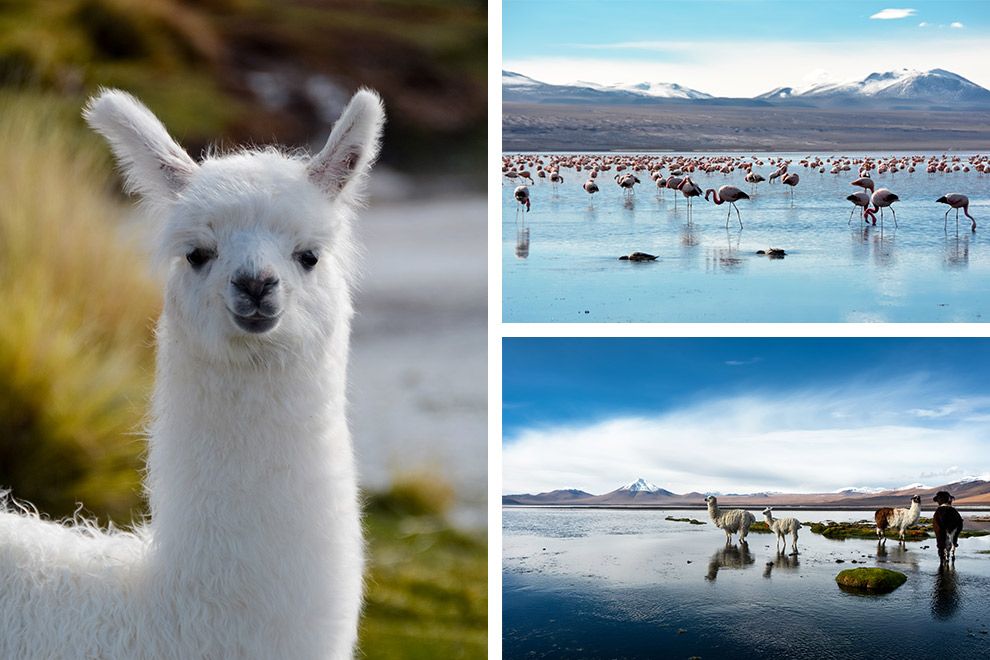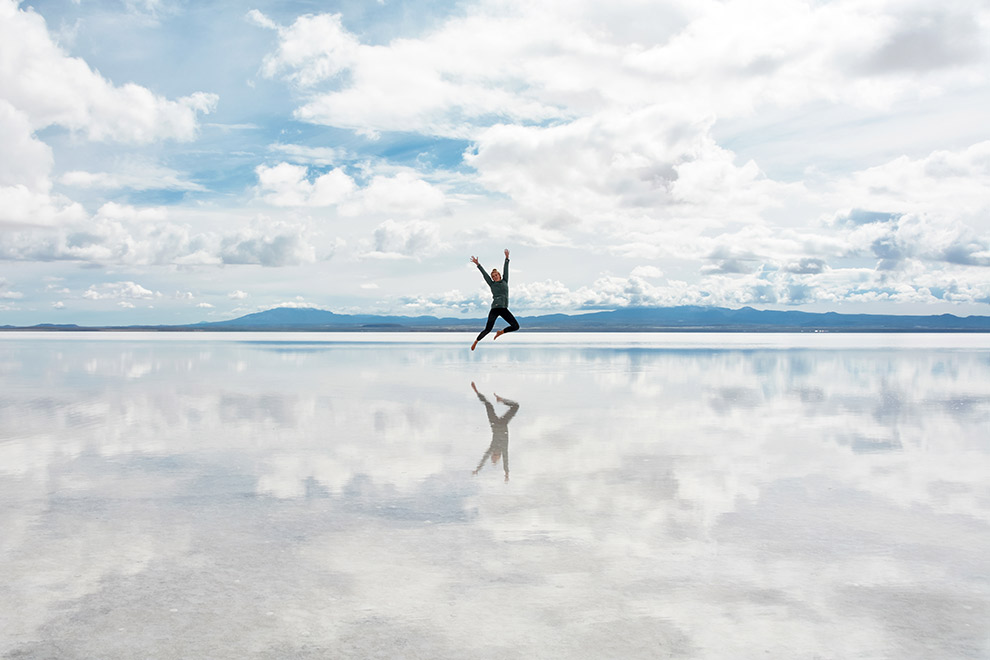With the jeep through Bolivia: high peaks, deep valleys
A journey through the middle of nowhere, without reception but with a purpose. Traveling back to basics through the highlands of Bolivia. We're on our way to the world-famous Salar de Uyuni. An adventure that doesn't go without its hiccups, but the reward is more than worth it.
Paula van de Kamp
I wake up groggily from a light sleep. Time for a nocturnal visit to the toilet. Slowly, I unzip my sleeping bag. An icy cold penetrates the warm air that had collected inside. I swing my legs out and stand up quickly in the same motion. The faster I can crawl back into that warm sleeping bag, the better. Suddenly, my head starts spinning, and I cling to the doorknob, feeling lost.
I had momentarily forgotten that our hostel is situated at about 5,000 meters above sea level. My head is pounding, and the slightest movement hits me like a bomb. I wonder why on earth I embarked on this adventure. Early the next morning, we hop back into the 4x4 and drive deeper into the uninhabited world. Looking out of the car window, I marvel at my surroundings. Could it all be worth it after all?
High altitudes
My journey through Bolivia, with the highlight being the Uyuni salt flats, starts in the north of neighboring Chile. In the driest desert in the world: the Atacama. However, this fact is quickly brought into question when it turns out that the area is experiencing severe floods and waterlogging. A state of emergency is declared, and all tours are halted.
Fortunately, it seems that things are better with our neighbors, and we head with renewed determination to the border for a four-day adventure through the altiplanos of Bolivia. This high plateau is the second-largest in the world after Tibet's. Armed with a strip of pills against altitude sickness, we ascend from 2,400 meters to our first stop: Laguna Blanca. A salt lake located at about 4,300m, surrounded by snow-capped peaks.

Unaware of what awaits us, we climb out of the Jeep one by one. Everything moves at a snail's pace, because with that little bit of oxygen, every effort quickly becomes too much. The somewhat cloudy but oh-so-impressive sky reflects in the still water, creating a true mirror, no, a real painting as a result.
This is just the beginning of the splendor Bolivia has to offer us. We continue the journey, passing natural hot springs, deserted valleys, and curious llamas. And the literal highlight of the day: the geysers of Sol de Mañana (4,800-5,000m). If the altitude doesn't make us nauseous, then the smell of these steam-spewing and mud-boiling sulfur springs certainly will.

Back to basics
After a somewhat broken first night, during which my Chilean travel companion knocked out and the oxygen tank had to be brought out, it's time to continue the journey to Salar de Uyuni. A destination that has long been high on my bucket list. We leave behind the ramshackle hostel, miraculously held together with corrugated iron as a roof, and enter the Eduardo Avaroa Andean Fauna National Reserve: the most visited protected area in the country.
Yet, we are not surrounded by hordes of tourists here. Instead, the view of Laguna Colorado is dominated by flamingos, llamas, and even more flamingos. It creates fairy-tale-like scenes. My camera is working overtime.


From one fairy-tale landscape to another, we experience Bolivia at its best. Well, if you momentarily forget about the side effects of the altitude sickness medicine, that is. Something that is quite a challenge, considering I've had a strong tingling sensation in my hands and feet for two days, need to pee every five minutes, and have little to no appetite. And when it comes to peeing, you just do it behind a bush, right? Unfortunately, toilets are rare in these highlands, so you end up squatting together in a row, hidden behind the car doors. In addition to the lack of oxygen, a lack of privacy can also be added to the list.
With five jeeps, we continue through rugged landscapes and vast plains. Here and there, we stop to enjoy the view, prepare a simple lunch with the food we've been carrying for days, and admire the natural beauty. From rock formations in the most imaginative shapes to mirrored lakes full of bright pink flamingos. I can't get enough of it.
As I pull out my camera and zoom lens for the umpteenth time, my gaze falls on a group of flamingos. "Did you know that flamingos are actually white by nature?" the guide asks before I can even open my mouth. "They absorb the carotenoid pigment that colors their feathers pink through their diet, which includes algae, small crustaceans, and shrimp." I refocus my attention on the view through my lens and search for the perfect frame to capture all this beauty forever on film.


Salt, Saltier, Saltiest
The day of days has arrived, we have reached what this journey is all about: the Salar de Uyuni. Located in the southwest of Bolivia, with over ten thousand square meters of surface area, it's undeniable that this is the largest and most impressive salt flat in the world. As a result of the drying up of a gigantic prehistoric lake, not only did the ideal source for salt extraction emerge but also Bolivia's most famous attraction.
Think: blue skies and kilometers of white desert. And if you're lucky, the salt-covered flat turns into a massive mirror. Whether we'll be lucky enough to experience that, we don't know yet. Before the sun rises, we take our seats on the salt-made benches in the salt hotel. The sky outside is gray and grim. For a moment, I fear my dream will dissolve in the salty water. But then, not much later, there's the sun, the blue sky, and the mirror. As if it was meant to be.


Adventure at its best
The fact that Bolivia is one of the poorest countries in South America is not unnoticed. What is a back-to-basics experience for us is the reality for the local population. Amidst the altiplanos, we move from one deserted plain to another. With the occasional small piece of civilization, I begin to realize that these are the real hardcore individuals. Although the altitude may not affect them much, the amenities here are minimal.
The hostels where we stay are no exception. Not a single staircase is level, nor a door that closes properly. It has its charm. Combined with the icy cold, it's sometimes a bit tough, but soon all of this becomes part of the great adventure we find ourselves in. Off-grid in the highlands of Bolivia, seeking out all the beauty this land has to offer us. And despite the side effects, the altitude sickness pills (acetazolamide) are certainly not superfluous! Just so you know.

Discover even more adventures and inspiration in our e-book, packed with unforgettable road trips worldwide. Download it now and start planning your next road trip >
Create your own blog
Easily add stories to your diary in our online editor or app
Add your images and choose your pages layouts
Share your journey in real time without the fuss!
